A restaurant can be costly to start, and meticulous planning is essential. The average cost for starting a restaurant in the U.S. ranges from $295,000 to $660,000.
There are also some tough questions you need to ask yourself to establish whether this is the right business for you.
Have you worked in a restaurant before, and do you know what it entails? Are you willing to work long hours, over weekends, and on holidays? Are you willing to mop floors, prepare food yourself, deal with irate customers, etc.? Can you work in a stressful, fast-paced, emotionally charged environment with people from diverse backgrounds?
The restaurant business is notoriously risky. Even the best-planned restaurants can fail, sometimes due to circumstances beyond their control. Recent studies by Dr. Haragopal Parsa from Daniels College of Business at the University of Denver, Colorado, show that 59% of restaurants fail in the first three years.
However, if you are among the 41% that succeed, the good news is that it could be financially rewarding to start your own restaurant.

How to Start a Restaurant — Checklist Download
Use our checklist in PDF format to stay on track when starting your new restaurant.
Download Now
Restaurant Business Plan — Free Template
Use our free template in Microsoft Word format to create a business plan for your new restaurant.
Download NowHow to Start a Restaurant:

A restaurant can be a fun and lucrative business venture, but it takes a lot of planning and hard work to get a new eatery off the ground. Before starting your own restaurant, you'll need a detailed business plan, a good location, a marketing strategy, and a winning menu. Follow the steps below to get your restaurant up and running.
Conduct market research.
Research and outline your concept.

You may already have an idea or concept in mind for your new restaurant. Your concept should include the style of your restaurant and the food you plan to serve, including your menu. Build a clear, detailed picture. Don't be concerned if there are gaps initially. The picture will take shape and become clearer as you go.
When outlining your restaurant concept:
- Decide which demographic you want to target.
- Outline the style of the service.
- Describe the ambiance you want to create.
- Determine what food you want to serve.
- Plan your menu.
Examining the concepts created by other restaurants will help you develop your own. Visit their websites, social media pages, and physical locations to see how they've branded themselves. Pay attention to the food, the place settings, the atmosphere, the service, and even the color schemes.
Keep a notebook handy or use Google Docs to update your concept as you learn more and fine-tune your ideas.
Survey consumers.

Doing market research for your restaurant will help you determine who your likely customers are, if there are enough of them, and how best to make them happy.
You can find consumers in places with lots of foot traffic and ask them your questions directly, or you can conduct an online survey to cast a wider net.
Create polls on Facebook, Instagram, and X, or use free survey software to create online questionnaires.
Check if your concept is feasible. Who are your prospective patrons? Will they be drawn to your concept? Will enough people with enough spending power go to your restaurant?
Be sure to find out how many of your potential customers will visit your location and how many prefer takeout or delivery options.
Conduct industry research.

Look at successful restaurants similar to yours — examine them and try to decipher their secrets. Learn what customers are saying by reading their reviews. Get in touch with fellow restaurateurs to find out which restaurants the market needs or doesn't need more of.
Keep abreast of industry trends and join the conversation by following your favorite eateries and chefs on social media.
You can also get interesting ideas and insights by keeping up with restaurant shows.
If you're struggling to connect directly with restaurant owners, try emailing them your questions. You may get more detailed responses when they reply at a time most convenient for them.
Study your competitors.

Analyze your competitors to learn about their strengths and weaknesses. Find out what they're offering customers and how you can distinguish your restaurant from theirs. Look not only at what they've done right, but also examine their mistakes so that you can avoid these pitfalls.
Think about ways to make customers feel safe when they visit your restaurant or order food online.
Get people to sample your food.

Conduct taste tests with potential clients and find out what they think of your culinary creations. Friends and family work well as initial focus groups, but they can't always be relied upon to provide honest, unbiased feedback. Try setting up a stand at a local supermarket or farmer's market, or putting up advertisements for focus groups.
Prepare a list of questions that will help you get constructive feedback from your taste testers. Avoid questions such as "Do you like this?" or "How does it taste?" Instead, opt for questions like "Which of these three flavors do you prefer?" or "Which of these were too salty/sweet?"
Pay careful attention to the body language and facial expression of the taste tester. If they come back for more samples, it's likely a good sign.
Make lots of notes during the taste tests and use negative feedback to improve your recipes. When you react badly to constructive criticism, you may discourage people from voicing their honest opinions.
Develop a menu suited to your target market.

Use the knowledge gained from your surveys, taste tests, and other research to develop a menu that your target audience will love.
Your menu isn't set in stone. As you gain more insight into your customers' taste preferences, feel free to adjust your menu accordingly.
Now that you know your target audience, align what you have to offer them with what they have to offer you. Your concept has to meet your target market's needs. You can stick to your original concept for the sake of self-expression, but you'll have to accept the high risk of failure.
Choose a name and trademark it.
Get ideas from existing restaurants.

Examine the names of existing restaurants. Find good and bad names, and try to identify why some names work well, while others don't.
Try to identify patterns in the way restaurants have been named. Do you spot any common words that are used? Write them down — they will come in handy later on.
Visit the social media pages and websites of the restaurants you research to see how the names have been used to create these brands.
Are there any eateries that changed their name at some point? If so, why?
Name your business.

You can find several useful keywords by simply analyzing your menu, location, the ingredients used in your dishes, as well as the interests of your target market. Write down all the keywords and combine them to form restaurant names.
Use our business name generator to discover even more name ideas for your restaurant.
Check domain name availability.

Before committing to a name, check to see whether your preferred domain name is available.
Visit domains.google and search for your favorite domain name to determine its availability.
Register your name.
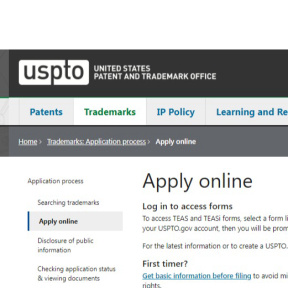
Now that you've decided on your unique name, register it by visiting your Secretary of State's website, or your local city or county clerk's office. Requirements for registration will vary depending on your restaurant's location.
To own the rights to your restaurant name, you can file a trademark application with the United States Patent and Trademark Office (USPTO).
Write a business plan.
Complete an overview of your business plan.

Writing a formal business plan won't feel so daunting if you do some legwork beforehand. Jot down answers to the following questions in preparation for your business plan write-up:
Who are you? What makes your restaurant truly special or different from the competition? Consider the overall experience as well as the individual meals on your menu.
What services/solutions will you provide? Think about how your restaurant will ultimately benefit customers. Will you offer delivery or are will yours only be a sit-down establishment?
Who is your target market? What does your ideal customer look like? Think about the customers who will most enjoy the ambiance and/or food that you serve.
Who are your competitors? How do you weigh up against other restaurants in your area?
How will you market yourself? How will you ensure that clients know about your tasty meals? What strategies will you use to create brand awareness?
Who will work for you? Describe your team. Think about all of the workers you need to hire to make a success of your restaurant.
How will you make and spend money? Provide a list of your projected income and planned expenses.
What are your milestones? Create a timeline and fill it with all of the activities you need to complete before you can start your restaurant. Include due dates and the roles of responsible staff members.
Create your business plan.
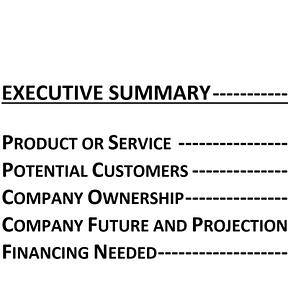
Starting a restaurant is a high-risk venture, and investors will be more approachable if you are armed with a good business plan. The document will also serve as a roadmap while you get your business up and running. Thus, it is important to draft a detailed, compelling business plan.
Essentials for a restaurant business plan:
- Executive summary.
- Company description.
- Marketing plan.
- Operational plan.
- Management plan.
- Financial plan.
- Appendices.
Download the template toward the top of this page to streamline the process of creating your business plan.
Form your restaurant business.
Create a legal entity.

You'll need to set up your restaurant as a legal entity for financial and professional purposes. Speak to a lawyer and a tax professional to determine which legal structure makes the most sense for your new restaurant.
Some legal structures to consider include:
Sole proprietorship: one person owns and runs the business. Sole proprietorships are great for small, low-risk businesses.
Partnership: two or more people own the business, with liabilities and control divided between them. The most common types of partnerships are limited partnerships (LPs) and limited liability partnerships (LLPs).
C corporation: a separate legal entity that provides maximum protection from personal liability. C corporations can continue undisturbed when shareholders leave or sell their shares but may be subject to double taxation.
S corporation: a unique type of corporation that's not subject to double taxation. Like C corporations, S corporations are regarded as distinct legal entities. However, they must meet specific criteria.
Limited liability company (LLC): a cross between a corporation and a partnership. This structure allows members to protect their personal assets and is suitable for medium to high-risk businesses.
If you decide to register as an LLC, it is advisable to create an operating agreement. In fact, this may be a requirement in your state, so make sure to visit your Secretary of State website to double-check.
For more information about legal structures suited to restaurants, you can approach the National Restaurant Association or your local state restaurant association.
Obtain an Employer Identification Number (EIN).
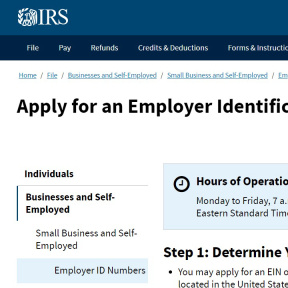
You'll probably have a team running your restaurant, so you'll need to apply for an Employer Identification Number (EIN) for tax purposes. This may even be a requirement if you'll be operating your restaurant single-handedly.
Open a business bank account.
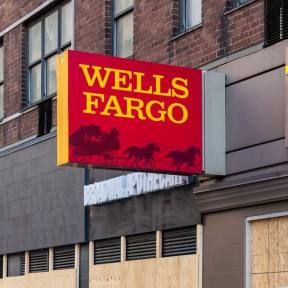
A business bank account will help separate your business and personal finances, simplify your tax preparation, offer a sense of credibility, and help you build a good relationship with your bank.
Apply for licenses and permits.

There are some basic licenses and permits that all restaurants require, and others that may not apply to you. Discover which licenses and permits you need and obtain these before you open your restaurant.
Purchase insurance.

Ensure that injuries, accidents, and similar phenomena are covered so that you, your workers, customers, and business are protected.
Consider purchasing the following types of insurance:
- Commercial general liability insurance.
- Commercial auto insurance.
- Workers' compensation insurance.
- Commercial umbrella insurance.
Before signing up with an insurance company, compare quotes and consult an independent insurance agent.
To save money, take out multiple insurance policies with the same provider and bundle them.
Decide on a location.
Research local areas.
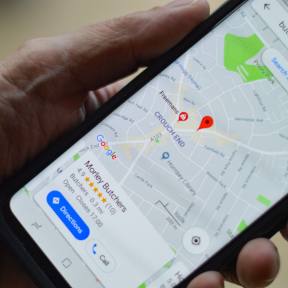
Look at a few different areas where you could set up your restaurant. They should be safe, well-placed, and near your target market, with minimal competition.
Shop around and compare quotes before making the final decision.
Make sure you have ample parking.

To determine your parking ratio — how many parking spots you have relative to the square footage of your restaurant — you'll need to perform some calculations.
Take, for example, a restaurant with 400 parking spots that's 50,000 square feet. The calculation to determine the parking ratio is 400 divided by 50. The result is eight parking spaces per 1,000 square feet.
You could also estimate how many patrons you would expect on your busiest day. Assume each one arrived in their own vehicle. That is how much parking you'll need.
Each city has different rules and regulations regarding parking. You'll need to familiarize yourself with these before you choose your location.
Secure financing.
Contact the National Restaurant Association.
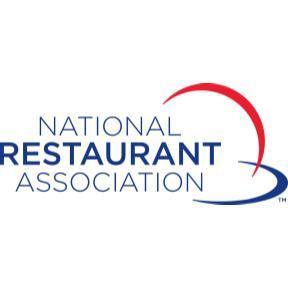
Get in touch with the National Restaurant Association and your local state restaurant association for advice. These bodies can offer guidance on how to secure financing for your restaurant.
Apply for a loan.
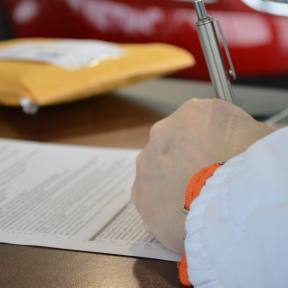
Approach a bank to apply for a small business loan. Be prepared and professional, and make sure you furnish the bank with all the required documentation. Remember to bring your detailed business plan along, too.
Be sure to shop around for the most favorable repayment terms before you commit to anything.
Get an SBA loan.
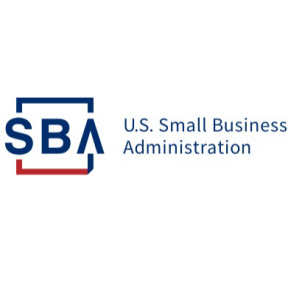
The U.S. Small Business Administration (SBA) offers loans with longer repayment periods, lower interest rates, and smaller down payments compared to conventional loans. You can find a suitable lender and get the process started in just two days.
Obtain a business credit card.
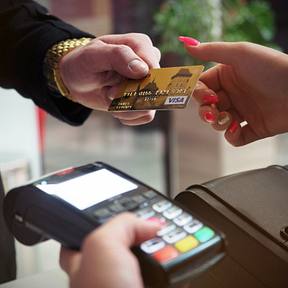
A business credit card can give you financial flexibility and will help keep your business and personal finances separate. They are easier to apply for than loans and can help you build a good credit score.
Shop around before applying for a business credit card, and compare reward programs before making a final decision. Many business credit cards offer points that can be converted to cash rewards and/or travel credit.
Find investors.

Network until you find your investor(s). Reach out to family and friends who have the capital to invest in your venture. You can also try to secure an angel investor — they'll have some interest in the viability of the venture.
Try crowdfunding.

Once you get your brand out there, you can try to get crowdfunding through sites such as FoodStart, Kickstarter, Indiegogo, and GoFundMe.
Strike a deal with your landlord.

Ask your landlord for reduced rent in exchange for shares in your restaurant. Consider this option once you secure premises for your restaurant.
Use your own money.

If you've saved up to open your dream restaurant, using your own money is a great way to avoid debt and overspending. This may also allow you to maintain full control of your business.
If you have enough savings to cover your startup capital, your restaurant may be up and running sooner than expected.
Even if you don't have all the funds required to get your restaurant off the ground, using your savings can still minimize your overall liabilities.
It is important to note how much you might earn. Research shows that the average restaurant owner earns around $65,000 per year. However, there is considerable variation from about $33,000 to $144,000.
Secure and prepare your space.
Make a list of everything you'll need and compare prices.

To get an idea of what it is going to cost you to open your restaurant and what it will take to get it off the ground, make a list of what you’ll need to purchase and compare prices before committing to anything.
Refer back to your business plan where you would have outlined your equipment and inventory requirements, as well as estimated costs thereof.
Secure premises.

There are many factors to consider when choosing premises for your restaurant, and at this stage, you will still be looking around to get an idea of what is available. Contact commercial real estate brokers in your area to help you find the perfect spot.
Consider renting kitchen space from a food incubator or an incubator program, or starting a food truck, pop-up restaurant, or ghost kitchen. A pop-up restaurant or supper club can be operated from factory spaces, private homes, and festivals.
Complete shopfitting.

Depending on your budget, you can either hire a shopfitting firm, a consultant, or do the work yourself with help from friends and family.
Shop around for furniture to find the best deals. Auctions are a good place to source almost new furniture. Depending on your budget and the style of your restaurant, you can also shop around for more worn pieces.
Shopfitting costs range from $300.00 to $500.00 per square foot for a kitchen, and $150.00 to $300.00 per square foot for a dining room.
Purchase small appliances, utensils, and more.
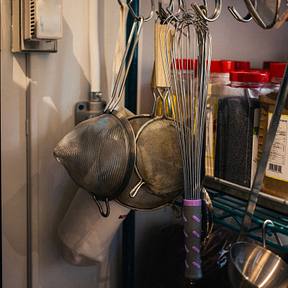
There are many suppliers of small appliances, some of which cater to the restaurant industry, specifically. Shop around for the best deals.
Purchase electronic equipment.
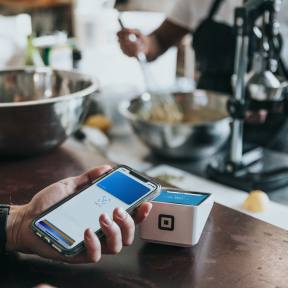
You may need a restaurant point of sale (POS) system, as well as a computer to take bookings and communicate with patrons, suppliers, and others via email. You may also want to purchase a few television sets if you're hoping to attract sports fans.
Purchase office equipment and basic office furniture.

You'll need some basic office furniture for your back office or little corner where you'll do your restaurant's admin and cash-outs. There are many well-established suppliers of office furniture and equipment to choose from.
Purchase uniforms.

These can be sourced from a company that specializes in restaurant uniforms. Alternatively, you could agree on a specific outfit that all staff will wear — for instance, blue jeans and white T-shirts.
Refer to our table to discover the prices of restaurant uniforms.
Purchase consumables.

You will need to shop around for companies that best meet your needs for a range of supplies, such as food and beverages. You won't be able to get all your supplies from one company, so be prepared to deal with a number of suppliers with whom you will build relationships over time.
Build your team.
Write compelling job descriptions.

Create enticing job descriptions and post them on local job boards and social media.
Some positions you may want to fill at your restaurant include:
- Restaurant manager.
- Executive chef.
- Sous chef.
- Line cook.
- Food preparation worker.
- Barista.
- Busser.
- Food server.
- Food runner.
- Host.
Identify and interview the best candidates.

Consider using recruitment and resume parsing software, as well as staffing agencies, to identify the best candidates for your vacancies. Thereafter, conduct interviews and send out job offers.
Look for individuals who can work in fast-paced, high-pressure environments, and who don't mind working late nights and weekends.
Implement paid tryouts. Don't make a final decision right away; test the water with paid tryouts. This is a great way to evaluate applicants before making permanent additions to your team.
Train your team.

Ensure that all workers are familiar with health and workplace safety policies, that they know how to use the necessary equipment, and that the front of house staff are well versed in customer service.
Once you have built your team and need more hands, spread the word about available positions. Start by asking your staff to let their friends and family know about the vacancies.
Market your restaurant.
Create a website.

This is a great way to showcase your offerings while making your restaurant look like a professional business. You may want to add features to your website that enable customers to order ahead.
Set up social media accounts.

A social media presence will encourage potential clients to engage with your brand, see and share upcoming specials, and check in virtually when they visit your restaurant.
Get users to spread the word about your new restaurant by creating competitions where, for example, pages are liked, promotional posts are shared, and other users are tagged in the comments section.
Be sure to link your restaurant's social media accounts to your website.
Create marketing campaigns.

Set up text, email, and radio marketing campaigns. You can also approach print media such as magazines and newspapers to run advertisements.
Use local SEO.

Ideally, when someone does a search for a local restaurant, like "best restaurants near me," you should be prominent in the results. You can learn how to make that happen for your business using local search engine optimization (SEO) techniques, Google My Business, and Yelp!
Consider hiring a professional to help you.
Be a walking, talking billboard.

Tell people about your restaurant and what you've got to offer wherever you go. Having your business name and logo printed on uniforms, work and/or personal vehicles, and stationery is another way to get the word out about your new restaurant.
Complete the final checks before your grand opening.
Double-check your inventory.

Ensure that you have everything you need for a smooth grand opening. Tick the items off on a list and make the necessary purchases if anything has been overlooked.
Have a dress rehearsal.

Host a soft opening where a few customers are allowed a sneak peek at your menu and get to experience your new restaurant in an intimate setting. Prepare some of your signature dishes and get feedback from your diners before the grand opening.
If your budget allows, you can offer discounted meals or free food at your soft opening. However, if you have limited funds, be sure to offer a complimentary drink or some other token of appreciation to your guests.
A soft opening will help staff prepare for the main event, iron out any operational kinks, build excitement, and provide you with important feedback on your meals, service, and general ambiance.
Cost of Starting a Restaurant:
Restaurant Type | Price |
|---|---|
Food Truck | $15,000-$100,000 |
Diner | $200,000 |
Fast-Food Franchise | $10,000-$2.5 million |
Restaurant Uniform Prices:
Item | Price |
|---|---|
Apron | $3.50-$16.95 |
Shirt | $4.95-$32.80 |
Pants | $16.95-$29.60 |
Skirt | Approx. $36.00 |
Restaurant Licensing Requirements:
License Type* | Details |
|---|---|
Business License | A business license authorizes your business to operate. You need to apply for your business license with the city or state where you plan on opening your restaurant. The process of obtaining a business license depends on the state in which your business is located and the nature of your business. |
Certificate of Occupancy | This is required to verify that your building is safe for your staff and customers. It will be issued by local authorities in the town or city where your restaurant is based. |
Food Service License | This will permit you to sell food. Contact the applicable local authorities to inquire about applying for a food license. |
Liquor License | Liquor laws vary between states. Check these as soon as possible to estimate the applicable costs, as well as how long it will take to be issued a liquor license. |
Sign Permit | Before you erect signage for your restaurant, you may need a sign permit from your local authority. A sign permit will prescribe the dimensions of your signage and where you are allowed to erect it. |
Music License | Even if you pay for a streaming service, you still need to pay performing rights organizations (PROs) to play copyrighted music in your restaurant. You can pay an annual blanket music license fee with one of the three main PROs in the U.S.: ASCAP, BMI, or SESAC. Note that you may face penalties of between $750 and $30,000 if you do not pay. |
*This is not an exhaustive list. You may need to obtain additional licenses and permits for your restaurant.







